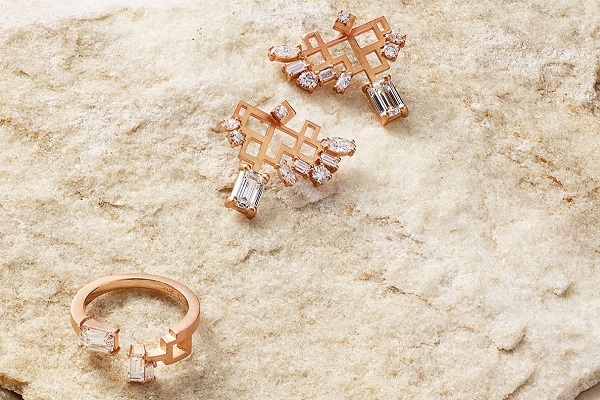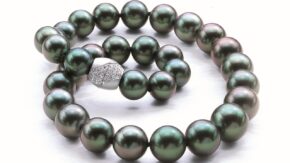RAPAPORT… When is a diamond a diamond, and does it matter? Those
were two key questions that emerged from the wide-ranging changes the Federal
Trade Commission (FTC) made to its jewelry guidelines last week. In that
update, the US consumer agency amended its definition of a diamond, removing
the word “natural,” thereby giving synthetics suppliers ammunition when arguing
that their products are the real deal.
That change, on a basic level, is largely academic. It
remains prohibited to sell synthetics just as “diamonds,” Sara Yood, senior
counsel at the Jewelers Vigilance Committee (JVC), explained.
“The use of the unqualified term ‘diamond’ still refers to a
natural diamond,” Yood said in a statement Thursday. As before, marketers must
still use a word or phrase such as “laboratory-grown” to clarify that their
products are not from a mine, though the FTC advises against the term “cultured”
without an additional qualifying word. Furthermore, the rules only permit the use
of words such as “real” and “genuine” for mined diamonds. (See the JVC’s full
interpretation of the guidelines here.)
“In a practical sense, not much changes for the trade,” said
Reuven Kaufman, president of the Diamond Dealers Club of New York. “If a
product is sold as a ‘diamond,’ without other qualifying language, it still
must be a natural diamond.”
Even so, the new definition has much symbolic significance.
Lab-grown diamond manufacturers will almost certainly use the amendments for
marketing purposes, now that they can tell consumers that their stones are diamonds even if they’re not from the ground.
The new guidelines “have created confusion and
misunderstanding as they redefine the word ‘diamond’ to include synthetic,
man-made, non-natural, artificial, imitation diamonds,” Martin Rapaport,
Chairman of the Rapaport Group, said in a trade alert Monday.
Those stones might have “essentially the same optical,
physical and chemical properties as mined diamonds.” But the FTC’s decision is
based merely on diamonds’ physical properties, rather than on “scarcity and
value differentiation,” Rapaport added.
Standard deviation
The move could force the trade to rethink its current
positions. The FTC is now at odds with the International Organization for
Standardization (ISO), which in 2015 defined the mineral as being “created by
nature,” stating that “the denomination ‘diamond’ without further specification
always implies ‘natural diamond.’” The new delineation also conflicts with that
of the Blue Book, the set of industry standards the World Jewelry Confederation (CIBJO) publishes, and with the “Diamond Terminology Guideline” that nine
natural-diamond organizations published in January.
None of the members of the technical committee responsible
for the ISO’s treatment of jewelry and precious metals has asked for a review
of its standards yet, a spokesperson for the organization said Saturday.
However, CIBJO may need to amend its Blue Book — which acted as the basis for
the ISO’s standard — in light of the FTC’s decision, according to Gaetano
Cavalieri, president of CIBJO. The confederation’s diamond commission will
discuss whether its characterization of the mineral is still valid at its
October congress in Bogota, Colombia, Cavalieri added.
“Clearly [the congress] session will be among the most
important conducted in recent memory,” he said.
Growing confidence
Lab-grown diamond companies, on the other hand, welcomed the
FTC’s changes. They also had other wins, such as new permission to use a wider
range of terms to describe lab-grown diamonds than before, as well as the
commission removing “synthetic” from its list of recommended adjectives.
Members of that sector have long criticized the ISO’s definition of diamond, claiming
it only served the natural industry.
“Removing the word ‘natural’ [from the FTC
definition]…legally clarified what we produce: diamond, identical to a
naturally occurring diamond,” said Tom Chatham, CEO of Chatham Created Gems
& Diamonds.
The FTC’s previous guidelines, which it wrote in 1956, didn’t
make sense anymore, lab-grown diamond manufacturer Diamond Foundry argued in
comments during the FTC’s review process. The commission agreed, explaining
that mining was no longer the only way of producing diamonds. Martin
Roscheisen, CEO of Diamond Foundry, hopes the change will be a “call to action”
for the ISO.
“We are presently reviewing how to champion change in regard
to the ISO,” he added.
Emotional battle
Synthetics makers are mainly acting on principle, as full
disclosure is still obligatory by all standards. However, their endeavors show
the emotional importance of the FTC’s decision, even if the practical implications
remain the same.
“To equate a natural diamond with a synthetic stone, irrespective of how they were sourced, is akin to saying that an original Rembrandt is the same as a forgery, simply because they both physically are paintings,” said Cavalieri. “Just as that would clearly be unacceptable, so should be likening diamonds sourced in nature to those mass-produced in a factory.”
The dispute over what defines a diamond, while theoretical on the surface, goes to the heart of the debate, as it represents a turf war between the two sides.
Image: Diamond Foundry



